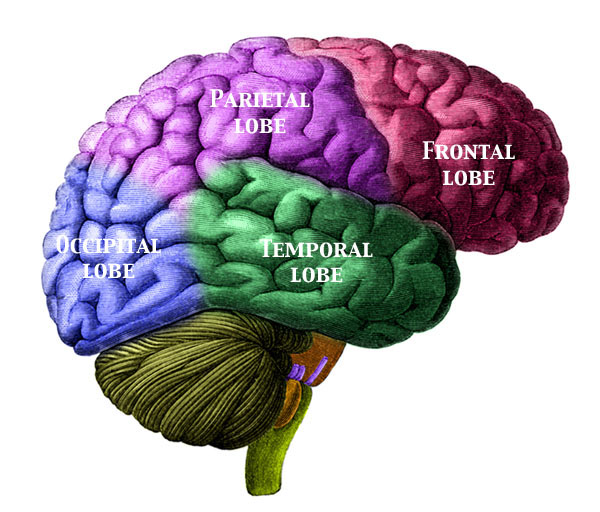The Lobes of the Brain: Wonder in Mystery
"The brain is like a muscle. When it is in use we feel very good. Understanding is joyous." - Carl Sagan
When the human brain decides to study itself, what happens? We are here to find out just a miniscule fraction of what the human brain has discovered about the human brain. When a person thinks about the human brain, they often imagine the cerebral cortex. This is the somewhat convoluted-looking mass of tissue full of neurons and a whole lot of mystery. The cerebral cortex is made of two cerebral hemispheres that are connected by a band of nerve fibers known as the corpus callosum. Within all the gyri (bumps) and sulci (grooves), making the brain so distinct and recognizeable, there are billions of neurons that communicate with one another and send messages throughout the body by way of chemical and electrical signals. All this contained power only weighs about three pounds!
As you start to divide the brain into different pieces, you see that the cerebral cortex is made up of four different lobes with varying functions. These four lobes are the frontal lobe, temporal lobe, parietal lobe and occipital lobe. Look below for a diagram of the lobes of the human brain.

By Camazine [CC BY 3.0], via Wikimedia Commons
Considerations of the Brain from the Writings of the New Church
"384. Since all the mind's constituents are connected with the will and intellect, and all the body's constituents with the heart and lungs, therefore in the head the brain is divided into two structures, and these are as distinct from each other as the will and intellect from each other. The cerebellum serves primarily the will, and the cerebrum primarily the intellect." - Divine Love and Wisdom n. 384
"There are two brains, two hemispheres of the brain, two ventricles of the heart, two lobes of the lungs, two eyes, ears, nostrils, arms, hands, loins, feet, kidneys, testicles, and other things; and where there are not pairs, there is a right and a left. There are pairs because goodness has truth in view in order that it may have existence, and truth has goodness in view in order that it may itself have being." - Divine Love and Wisdom n. 409
"4052. Moreover, such is the correspondence of the brain with the Grand Man, that they who are in the first principles or beginnings of good have relation to those things in the brain which are the beginnings, and are called the glands or cortical substances; whereas they who are in the first principles of truth relate to those things in the brains that flow out from these beginnings, and are called fibers; and yet with this difference-that those who correspond to the right side of the brain are those who are in the will of good and thereby in the will of truth; whereas those who correspond to the left side of the brain are those who are in the understanding of good and truth and thereby in the affection of them. This is because those in heaven who are at the Lord's right hand are those who are in good from the will; whereas those who are at His left hand are those who are in good from the understanding. The former are those who are called the celestial; and the latter those who are called the spiritual." - Arcana Coelestia n. 4052
"365. (2) A person's life exists in its first elements in the brain, and in its derivative elements in the body." - Divine Love and Wisdom n. 365
References
All information on the following pages was compiled with information from the following sources.
Cherry, K. (2018, February 24). A Guide to the Anatomy of the Brain. Retrieved from https://www.verywellmind.com/the-anatomy-of-the-brain-2794895
The University of Queensland (2018, April 17). Lobes of the brain. Retrieved from https://qbi.uq.edu.au/brain/brain-anatomy/lobes-brain